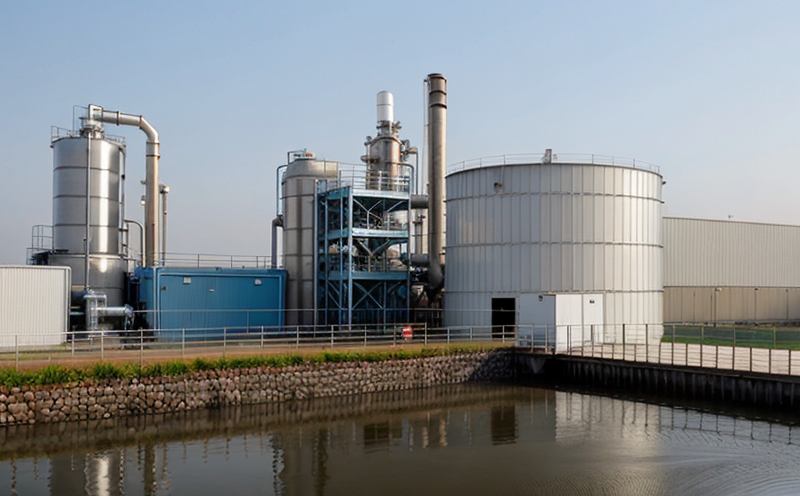ISO 24516 Asset Management Testing for Water Utilities
The ISO 24516 standard is specifically designed to provide a framework for asset management in water utilities. This ensures that the assets used in the maintenance, operation, and monitoring of water supply systems are managed efficiently and effectively. The standard focuses on asset lifecycle management, which includes planning, design, construction, operation, maintenance, rehabilitation, replacement, and decommissioning.
Asset management under ISO 24516 is essential for optimizing resource use, reducing costs, minimizing environmental impacts, and improving the reliability of water supply systems. The standard helps utilities to identify critical assets that need to be prioritized based on their importance to the overall system performance. This approach ensures that resources are allocated where they can have the greatest impact.
The testing procedures under ISO 24516 involve a range of methodologies, including condition assessment, risk assessment, and lifecycle planning. These tests help utilities to make informed decisions about asset management activities. For instance, condition assessments provide insights into the current state of assets, while risk assessments identify potential threats that could affect asset performance.
One of the key aspects of ISO 24516 is its emphasis on continuous improvement. This involves regularly reviewing and updating asset management plans to reflect changes in operational requirements or technological advancements. Continuous improvement ensures that utilities can adapt to new challenges and opportunities, thereby enhancing their overall performance.
In addition to these general principles, ISO 24516 also provides specific guidance for water utilities. For example, it advises on how to manage assets related to water treatment plants, distribution networks, and monitoring systems. These guidelines are tailored to the unique challenges faced by water utilities in maintaining high-quality water supply.
The testing procedures under ISO 24516 involve a range of methodologies, including condition assessment, risk assessment, and lifecycle planning. Condition assessments provide insights into the current state of assets, while risk assessments identify potential threats that could affect asset performance. Lifecycle planning helps utilities to plan for the future by considering how long an asset will be useful before it needs replacement or renovation.
Another important aspect of ISO 24516 is its emphasis on collaboration and communication. Effective asset management requires close coordination between different departments within a utility, as well as collaboration with external stakeholders such as suppliers and regulators. By fostering open lines of communication, utilities can ensure that all relevant information is shared promptly and accurately.
Finally, ISO 24516 emphasizes the importance of continuous improvement. This involves regularly reviewing and updating asset management plans to reflect changes in operational requirements or technological advancements. Continuous improvement ensures that utilities can adapt to new challenges and opportunities, thereby enhancing their overall performance.
- Condition assessments
- Risk assessments
- Lifecycle planning
- Collaboration and communication
- Continuous improvement
Why It Matters
The implementation of ISO 24516 asset management testing for water utilities is crucial for several reasons. Firstly, it helps to ensure the reliability and sustainability of water supply systems. By managing assets effectively, utilities can prevent disruptions in service and reduce the likelihood of system failures.
Secondly, this approach contributes to cost savings by optimizing resource use. Through careful planning and management, utilities can minimize waste and avoid unnecessary expenditures. This is particularly important given the increasing pressure on water resources worldwide.
Thirdly, ISO 24516 helps to reduce environmental impacts associated with water utility operations. By managing assets more efficiently, utilities can minimize their carbon footprint and other forms of pollution. This aligns with global efforts to promote sustainable development and mitigate climate change.
Fourthly, this standard enhances public confidence in the reliability and safety of water supply systems. When people have faith that their utilities are well-managed, they are more likely to support initiatives aimed at improving service quality.
Finally, ISO 24516 supports regulatory compliance by providing a clear framework for asset management practices. This ensures that utilities meet all relevant legal and regulatory requirements, thereby reducing the risk of fines or other penalties.
Eurolab Advantages
At Eurolab, we pride ourselves on offering comprehensive and reliable ISO 24516 asset management testing services for water utilities. Our team of experts is well-versed in the latest standards and best practices, ensuring that our clients receive accurate and actionable insights.
- We provide detailed condition assessments to identify current asset states
- Our risk assessments help utilities anticipate potential threats and plan accordingly
- Lifecycle planning ensures long-term sustainability of water supply systems
- We foster collaboration between different departments within a utility for better communication
- Our continuous improvement services enable utilities to adapt to new challenges and opportunities
In addition to these core competencies, Eurolab offers several unique advantages that set us apart from our competitors. Firstly, we have extensive experience working with water utilities across various sectors, including municipal, industrial, and commercial. This allows us to provide tailored solutions that meet the specific needs of each client.
Secondly, our team is committed to staying up-to-date with the latest developments in asset management technology and methodology. We regularly attend conferences, workshops, and other industry events to ensure that our expertise remains current and relevant.
Thirdly, Eurolab invests heavily in state-of-the-art testing equipment and facilities. Our laboratories are equipped with the most advanced instruments available, allowing us to provide highly accurate results.
Fourthly, we offer flexible service packages designed to meet the diverse needs of our clients. Whether you require a one-time assessment or ongoing management support, Eurolab has a solution that fits your requirements perfectly.





